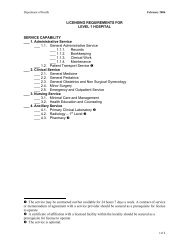

Bombings are the most common form of terrorist attack (Frykberg, 2004). Given finite resources, however, hospitals must attempt to focus their resources on the most likely and potentially serious scenarios. The federal government has grouped terrorist threats into five categories-chemical, biological, radiological, nuclear, and explosive (CBRNE)-which are also useful for classifying general threats (see Box 7-1).Įach type of threat presents different challenges to hospitals, which must able to respond to each in some capacity. Disasters can be natural, such as earthquakes, floods, and disease outbreaks or they can be man-made, such as transportation incidents, terrorist bombings, and biological or chemical attacks. This report expands that definition in the context of hospital-based emergency and trauma care to include any event that creates a significant, short-term spike in the demand for emergency care services that requires extraordinary measures to address adequately.ĭisasters can range from large multiple-vehicle crashes to massive events such as the North Ridge earthquake, Hurricane Katrina, and the terrorist attacks of September 11.

Ternational Federation of Red Cross and Red Crescent Societies defines a disaster as an event that causes more than 10 deaths, affects more than 100 people, or leads to an appeal for assistance by those affected (Bravata et al., 2004b). Planning for disasters involves a range of difficult questions: For what types of disaster events should hospitals prepare? Should every hospital prepare for disasters, or should medical response be regionalized? When does “busy” rise to the level of disaster, who makes that Running a hospital is an enormously complex task under the best of circumstances preparing a hospital for a disaster is infinitely more complicated. It is the epicenter of medical care delivered to those who are injured. The hospital plays a small but crucial role in this larger picture. While Katrina was unusual in its size and scope, the capacity of the emergency care system to respond effectively even to smaller disasters is still in question (GAO, 2003a).ĭisaster response involves many different community resources-from police and fire to medical providers, structural and environmental engineers, and transportation and housing experts. More than 4 years after September 11, however, Hurricane Katrina revealed how far we have to go in this regard. If we cannot take care of our emergency patients on a normal day, how will we manage a large-scale disaster? Federal, state, and local government entities have since realized the importance of hospitals, particularly emergency departments (EDs), in planning for such events, and significant progress has been made on integrating inpatient resources into planning for disasters (Schur, 2004). While the article focused on the day-to-day problems of diversion and boarding, the events of the following day brought home a frightening realization to many. News and World Report described an emergency care system in critical condition as a result of demand far in excess of its capacity (Shute and Marcus, 2001 see Figure 7-1).

The day before September 11, 2001, the cover story of U.S.


 0 kommentar(er)
0 kommentar(er)
